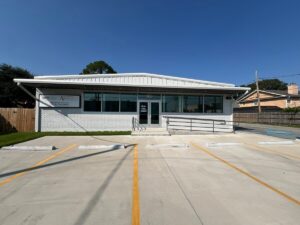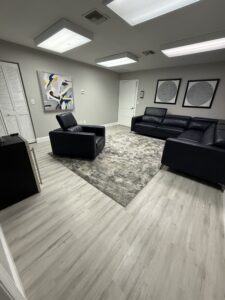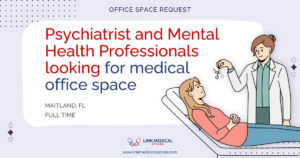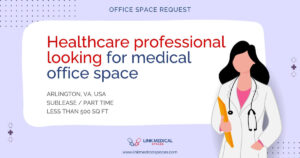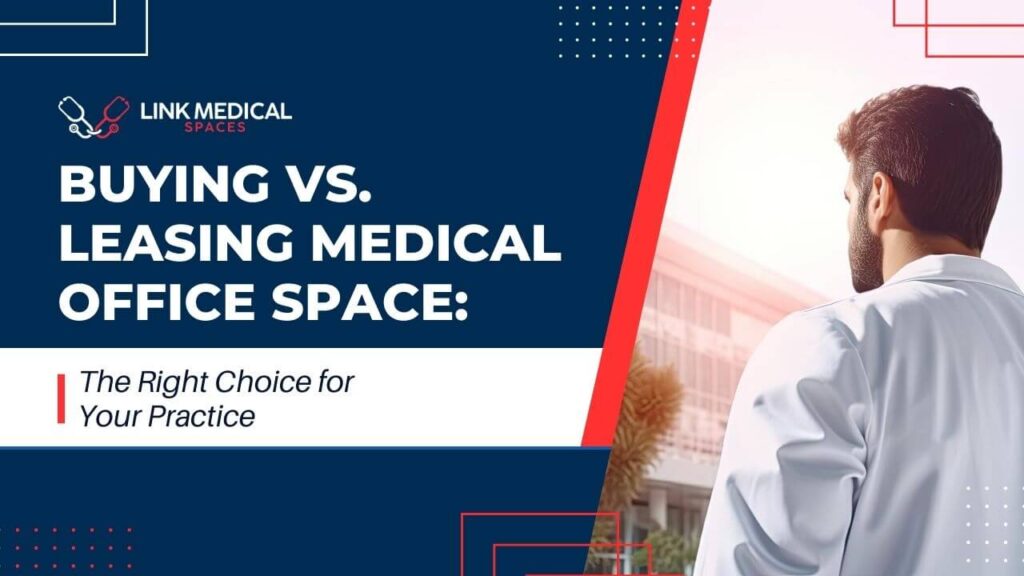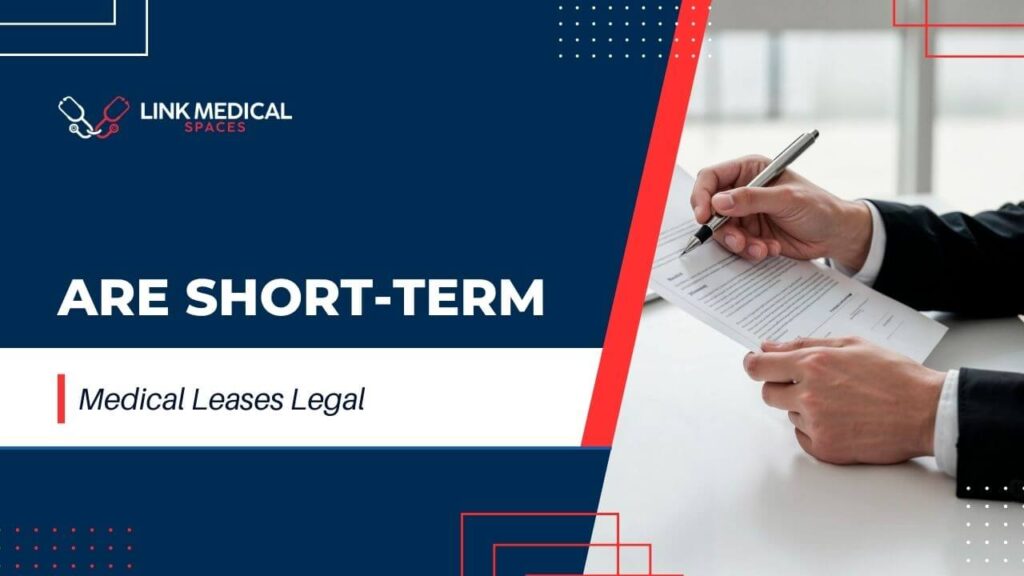Selecting the ideal medical office space is a pivotal decision that significantly impacts your practice’s success. An appropriate space enhances patient satisfaction, streamlines operations, and ensures compliance with healthcare regulations. Conversely, a poor choice can lead to operational inefficiencies and increased costs. This comprehensive guide provides a detailed checklist for healthcare professionals to evaluate potential medical office spaces effectively.
Location Considerations: Patient Accessibility, Parking, and Visibility
The location of your medical office plays a crucial role in attracting and retaining patients. Key factors to consider include:
a. Patient Accessibility
- Proximity to Major Roads and Public Transportation: Ensure the office is easily accessible via main thoroughfares and public transit to accommodate a diverse patient base.
- Ground-Floor Access or Elevator Availability: Facilities should be accessible to all patients, including those with mobility challenges. Keep in mind, two elevators are better than one. If one is out for repairs, you can still continue to see patients in your office if there is another elevator (ask me how I know!)
b. Parking Availability
- Adequate Parking Spaces: Aim for a parking ratio that meets the needs of your patient volume. Medical offices usually need a higher ratio of parking spots per square footage of area than regular office space.
- Handicap-Accessible Parking: Compliance with ADA standards is mandatory to accommodate all patients.
c. Visibility and Signage
- High-Traffic Areas: Locations in busy areas can increase walk-in patients and enhance brand recognition.
- Prominent Signage: Ensure the building allows for visible signage to guide patients effectively.
d. Proximity to Hospitals and Referral Networks
- Nearby Medical Facilities: Being close to hospitals or specialized clinics can facilitate referrals and collaborative care.
- Complementary Practices: Consider locations near other healthcare providers to create a comprehensive care environment.
Zoning and Compliance: Ensuring the Space is Legally Approved for Medical Use
Before finalizing a lease, it’s essential to verify that the space complies with all legal requirements for medical use.
a. Zoning Regulations
- Medical Use Approval: Confirm that local zoning laws permit medical practices in the chosen location.
- Future Development Plans: Investigate any upcoming zoning changes that could affect your practice.
b. ADA Compliance
- Accessible Facilities: Ensure the building meets ADA standards, including ramps, elevators, and compliant restrooms.
- Patient Rooms: Design patient areas to accommodate individuals with disabilities, providing adequate space for mobility aids.
c. HIPAA Compliance
- Privacy Measures: Design the office layout to protect patient confidentiality, including private consultation rooms and secure record-keeping areas.
- Soundproofing: Implement measures to prevent unauthorized disclosure of patient information.
d. OSHA and Biohazard Regulations
- Safety Protocols: Ensure the facility complies with OSHA standards for handling medical waste and hazardous materials.
- Staff Training: Provide appropriate training to staff on safety and compliance procedures.
Infrastructure Needs: Plumbing, Electrical, HVAC, and Medical Gas Lines
Medical offices require specialized infrastructure to support various medical services.
a. Plumbing
- Multiple Sinks: Install sinks in examination rooms (though getting less common these days), laboratories, and sterilization areas to maintain hygiene standards.
- Waste Disposal Systems: Ensure proper systems are in place for the disposal of medical waste.
b. Electrical Capacity
- Equipment Requirements: Assess the electrical load needed for medical devices and ensure the facility can support it.
- Backup Power: Consider installing generators to maintain operations during power outages.
c. HVAC and Air Quality
- Climate Control: Maintain appropriate temperatures for patient comfort and equipment functionality.
- Air Filtration: Implement systems to reduce airborne pathogens, enhancing infection control.
d. Medical Gas Lines
- Specialized Installations: Determine if your practice requires medical gas systems and ensure the building can accommodate these installations.
Future-Proofing: Space for Expansion and Flexibility in Lease Terms
Anticipating future needs is vital to ensure the longevity and adaptability of your practice.
a. Scalability
- Additional Space: Choose a location that allows for physical expansion as your practice grows.
- Flexible Layouts: Opt for modular designs that can be reconfigured to accommodate new services.
b. Lease Term Flexibility
- Renewal Options: Negotiate terms that provide options to renew or extend the lease under favorable conditions.
- Termination Clauses: Understand the conditions under which the lease can be terminated to avoid potential penalties.
c. Subleasing and Assignment Rights
- Transferability: Ensure the lease allows for subleasing or assignment to adapt to unforeseen circumstances.
- Landlord Approval: Clarify the process and criteria for obtaining landlord consent for subleasing.
Comparing Multiple Properties and Making the Right Choice
A systematic approach to evaluating potential properties will aid in making an informed decision.
a. Develop a Checklist
- Standard Criteria: Create a comprehensive list of requirements and preferences to evaluate each property consistently.
- Weighting Factors: Assign importance levels to each criterion based on your practice’s priorities.
b. Conduct Site Visits
- Firsthand Evaluation: Visit each potential location to assess its suitability beyond what is presented in listings.
- Staff Input: Involve key team members in site visits to gather diverse perspectives.
c. Financial Analysis
- Total Cost of Occupancy: Calculate all expenses, including rent, utilities, maintenance, and potential build-out costs.
- Budget Alignment: Ensure the financial requirements align with your practice’s budget and financial projections.
Leveraging Professional Expertise
Engaging professionals with experience in healthcare real estate can provide valuable insights and streamline the process.
a. Healthcare Real Estate Brokers
- Market Knowledge: Brokers specializing in medical properties can identify suitable spaces that align with your requirements.
- Negotiation Support: Experienced brokers can negotiate favorable lease terms on your behalf.
b. Legal Counsel
- Lease Review: Attorneys with expertise in healthcare law can ensure the lease complies with all regulatory requirements.
- Risk Mitigation: Legal professionals can identify potential liabilities and advise on protective measures.
c. Architects and Designers
- Customized Layouts: Professionals can design spaces that enhance workflow efficiency and patient experience.
- Regulatory Compliance: Architects familiar with medical facilities can ensure designs meet all necessary codes and standards.
Understanding Market Trends
Staying informed about current trends in healthcare real estate can influence your decision-making process.
a. Shift to Outpatient Care
- Increased Demand for MOBs: The growing emphasis on outpatient services has heightened the demand for Medical Office Buildings (MOBs).
- Location Preferences: There’s a trend towards locating medical offices in suburban areas to be closer to residential communities.
b. Technological Advancements
- Telemedicine Integration: Ensure the space can support telehealth services, including necessary IT infrastructure.
- Smart Building Features: Consider facilities with advanced technologies for energy efficiency and patient comfort.
c. Economic Factors
- Interest Rates: Fluctuations in interest rates can impact leasing costs and should be considered in financial planning.
- Healthcare Spending: An aging population contributes to increased healthcare spending, influencing demand for medical services.
Conclusion
Selecting the appropriate medical office space is a multifaceted process that requires careful consideration of various factors, including location, compliance, infrastructure, future growth, and market trends. By following this comprehensive checklist and engaging with experienced professionals, healthcare providers can secure a space that not only meets their

